Queen Isabella of Castile, Mother of Spain
The future queen Isabella was born on the 22nd of April 1451. She was the first child of King John II of Castile and was named after her mother, a Portuguese princess who was his second wife. Isabella was the second in line to the throne when she was born, after her elder half-brother Henry. Henry was the only surviving child of John II’s first marriage, and he was 26 when Isabella was born – older than her mother, in fact. John’s marriage was prompted by his fears about Henry – the prince had been married for seven years but this had ended in annulment because he had not consummated the marriage, and the gossip in the court was that he was impotent. Henry was thus predisposed to resent the girl who had been conceived to act as his heir. Isabella was soon booted to third in line to the throne after her younger brother Alfonso was born, since Spain practiced male-preference primogeniture. However by the age of three she was moved back up to third position, when her father died and Henry became King of Castile.

On ascending to the throne Henry banished his stepmother and her children to the remote castle of Arévalo, where they were kept under guard for fear of them being used against him by rebels. It was an unhappy childhood, as Isabella’s mother (known as Isabella of Portugal to historians) was not a well woman. After her daughter’s birth she had suffered severe post-partum depression, and she had never really recovered. After a while she began to suffer from delusions as well, speaking to people who were not there and failing to recognise her own children. It was a grim time for young Isabella and she took comfort in religion, becoming deeply pious. A rare bright spot came in her sixth year, when she was betrothed to the five year old Ferdinand of Aragon. It was a political betrothal, but it’s not hard to imagine that young Isabella grew to dream of her husband coming to rescue her from her misery.
It wasn’t a husband who rescued Isabella, though, but rather adultery. Probably. Whether Henry was actually impotent is impossible to determine, but there’s a lot of evidence to say he was – enough that when his second wife finally became pregnant most of the court were convinced that it was actually Beltrán de la Cueva, a dashing court nobleman and favourite of the royal family, who was the father. The child was a daughter officially named Joanna, but to the entire court (behind closed doors, at least) she was known as “la Beltraneja”. With his own heir in place, Henry finally felt secure enough to return his two half-siblings to court. Their poor mother, of course, remained safely out of the public eye in Arévalo.
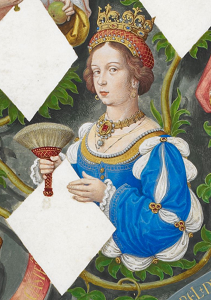
Life in court was better than isolation in Arévalo had been, though not without its trials. Isabella was part of the household of Queen Joan, a controversial figure who was generally regarded as scandalous in the fairly conservative court for her low-cut dresses. She was suspected of taking many lovers, due to her husband’s inability to satisfy her. Henry, in the meantime, was not a popular king among the nobles – mostly due to his pointless wars and politicking with the other Spanish kingdoms. The authority of the crown had been seriously eroded by a succession of weak kings, and nobles who were upset by the favours granted to Beltrán de la Cueva soon began to conspire against the throne.
In an attempt to keep Isabella shielded from this Henry kept her confined to the capital, though the young woman was cannier than she seemed and was well aware of what was going on. She was also aware of her main value to her half-brother, as he sought to arrange a new marriage for her. Her betrothal to Ferdinand had already been destroyed when Henry had secretly promised her to Ferdinand’s elder half-brother Charles (who was seeking to bolster his power and possibly overthrow his father). This led to a lot of turmoil in Aragon, a lot of ill-will directed at Henry, all for no gain after Charles died in 1461 before the wedding could take place. Henry then sought to strengthen his ties to Portugal by marrying her off to his brother-in-law King Afonso, but that fell through. It was around this time that open rebellion broke out against King Henry.
The rebellion was led by the brothers Pedro and Juan Pacheco and their uncle Archbishop Alfonso Carrillo de Acuña. The three nobles had been running roughshod over the weak-willed Henry until Beltrán de la Cueva had replaced Juan as the king’s favourite. In 1464 they gave the king notice that if he did not reform his court they would depose him. Henry negotiated an agreement with them where Alfonso rather than Joanna became his heir, with the condition that the two would marry when she was of age. However when Henry then tried to backtrack on this agreement the nobles finally broke out into open revolt. In a ceremony later derided as the “farce of Ávila” they set up an effigy of the king and (after saying Mass, to solemnise the occasion) they charged him in absentia with being a homosexual pacifist Muslim cuckold. [1] The latter also delegitimised Joanna’s claim to the throne, and so they declared the ten year old Alfonso (who they had managed to get hold of) as the new king.
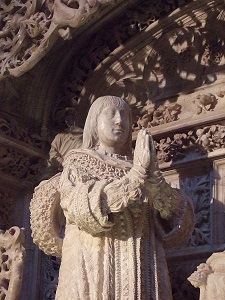
The nobles actually set up a rival court with their child-king, and treated him as “Alfonso XII”. Though most of the country was still overtly loyal to Henry, the whole situation lead to three years of riots and general civil unrest. The conflict did break out into open battle in August of 1467 at the Second Battle of Olmedo, an inconclusive affair where both sides claimed victory. Then, in 1468, Alfonso suddenly fell ill and died. Poison was suspected (with the finger pointed at Henry’s wife Joana) but nothing was ever proven, and it could easily have just been disease. Alfonso’s will left the crown to Isabel and the rebels did approach her but she was well aware that she would have been treated as even more of a puppet than her brother had been and declined. The rebels then made peace terms with Henry, and as part of those negotiations Isabel was made Henry’s heir. Unfortunately for her another part of the agreement was that she would be married to the 45 year old Pedro Pacheco, in exchange for him donating enough money to the treasury to solve Henry’s financial problems. Isabel was utterly horrified by the idea of marrying Pedro, and she prayed to God for a miracle. She got it, when he fell ill and died while on his way to visit her.
After that Isabella and Henry reached an agreement – she would be allowed to arrange her own marriage, but would have to obtain Henry’s consent. However when King Afonso of Portugal once again contacted Henry he broke his promise and began arranging a wedding. His plan was to marry Isabel to King Afonso and to marry Joanna to Afonso’s son John, with the idea that the two would inherit both Castile and Portugal on Afonso’s death. Not only was this breaking his promise to Isabel, it also made it clear that Henry still didn’t consider her a potential ruler. Moreover it’s rumored that Queen Joana had made several attempts on Isabel’s life, in order to clear the way for her daughter to inherit. Isabel’s only hope for survival and personal power was in a political masterstroke, and it was in her childhood dreams of salvation that she found it.
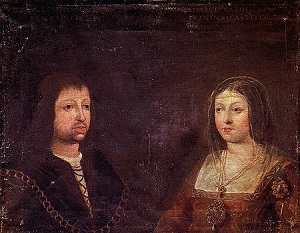
Isabel secretly communicated with King John II of Aragon and proposed that her betrothal to Ferdinand (now heir to the throne of Aragon) be renewed. The King agreed to this, and the complicated negotiations began. Isabel’s key objective was to maintain her independence, and so it was agreed that the two would not be co-monarchs – rather Ferdinand would inherit the crown of Aragon, Isabel the crown of Castile, and the two kingdoms would remain separate entities each ruled by one spouse. As the two were second cousins a papal dispensation was needed to allow them to marry. This would have been difficult to obtain in secret, but the Aragonese cardinal Rodrigo Borgia produced a papal bull supposedly dating back to their original betrothal and signed by the previous Pope. [2] With that sorted, Isabella extracted herself from the capital with the excuse of either visiting Arévalo to see her mother or of visiting Ávila to pray at her brother’s tomb (reports vary). In actuality she went to the city of Valladolid (which she later made her capital). Ferdinand had already made his way there in disguise and the pair were formally betrothed on the 18th October 1469, and then married the next day.
The motto of the new couple was “tanto monta, monta tanto” – roughly, “equal in all things”. It wasn’t entirely true, as unlike Isabella her husband didn’t have to worry about his inheritance. Henry didn’t react well to her marrying without his permission, and declared that the earlier agreement naming her heir was null and void. His nobles were still much more supportive of Isabella as queen though and so this was little more than a token gesture. His health was also beginning to fail at this point – modern doctors theorise that Henry suffered from renal disease and that his kidneys were now beginning to fail. As a result of his decline Isabella was well aware of the need to be prepared. On the 11th December 1474 Henry died. Two days later on the 13th Isabella was crowned Queen of Castile.
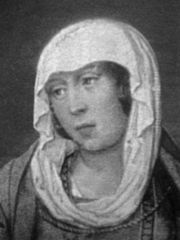
Of course, it was never going to be that simple. Princess Joanna fled to Portugal and the court of her uncle King Afonso, who championed her right to the throne. (An added wrinkle was his plan to marry his niece and thus rule both kingdoms.) France threw their support behind Portugal and Afonso moved his armies into Castile in 1475. This may have been a miscalculation, as it immediately positioned him (and thus Joanna) as an invader. As a result Isabella soon had the support of most of the Castilian nobility (as well as the kingdom of Aragon, of course, since Ferdinand had inherited his father’s crown that year). Portugal had some initial successes, but a harsh winter played against the aggressors and by 1476 they were on the back foot. In the meantime Castilian privateers harried the Portuguese possessions in Africa, disrupting their trade.
In August of 1476 Afonso signed a peace treaty and withdrew. He hoped to reinvade, but his French allies were soon distracted by their own problems. As a result Isabella was able to entrench her own power, and those few Castilian nobles who had supported Joanna soon switched their allegiance. There was some holdouts, but Isabella didn’t hesitate to throw the weight of her troops against them. Another blow to Joanna’s cause came on June 30th 1478, when Isabella gave birth to her first son John. The Portuguese made one final push in the beginning of 1479, but then the Pope threw a spanner into their works by revoking his dispensation for Afonso to marry his niece. With that no longer an option, Afonso went back to the negotiating table. The end result was that he gave up any claim to the Castilian throne, and both Isabella and Ferdinand gave up their claims to the throne of Portugal. [3] Joanna was forced to give up all of her titles and to retire to a convent. The various claims and territories in Africa and beyond were agreed on, and peace was declared. Isabella and Ferdinand’s nine year old daughter (also named Isabella) was married to Afonso’s four year old grandson (also named Afonso), with a large dowry to seal the deal. With that resolved Isabella was finally free to reign over Castile.

Queen Isabella’s reign bore some similarity to that of her contemporary monarch, Henry VII of England. Both came to the throne after a period of prolonged instability, both sought to recentralize power that weak monarchs had let slip, and both did it through a combination of ruthlessness and pragamatism. Also like Henry, she showed a keen appreciation for how important finance was to the country. Her brother had severely run down the treasury, and had attempted to compensate by minting more money (leading to runaway inflation). Isabella reversed this, implemented new taxes and reclaimed much of the lands he had sold off cheaply by instituting a policy of buying them back at the same price. In addition she established the country’s first official police force in order bring an end to the anarchy that had prevailed throughout much of the country. She also realised that most of the actual work of administration in the kingdom was done not by nobles but by a cadre of professionals who had sprung up to service them. She formalised this ad hoc civil service, and made participation by nobles in the running of the country strictly optional – thus weeding out those who had no interest in taking part, and ensuring that only those who were actually interested in serving their country remained.
Another method used to consolidate power was through public relations, and specifically through the church. This was prior to the Reformation which splintered European Christianity, but Spain still offered plenty of opportunity for proof of piety through persecution of “the other”. The kingdoms were home to significant minority communities of Jews and Muslims. The Muslims had ruled Spain until relatively recently, and their religious tolerance had made the country a magnet for the Jews of Europe to settle. Now those same Jews faced huge pressure from the Christian establishment to convert. Massacres and pogroms in 1366 and 1391 had driven many to convert out of fear and self-preservation, while those who did not convert were often compelled to wear special badges and to attend Catholic masses. Many of those who converted continued to practice their religion in secret. Known as “Marranos”, these people were considered dangerous heretics by the Catholic church and in 1480 the infamous Spanish Inquisition was set up to investigate and prosecute them.
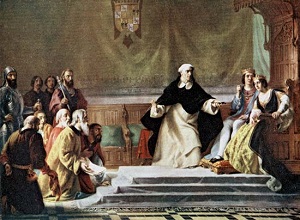
The unlimited powers of the Inquisition proved a potent weapon for Ferdinand and Isabella to use against enemies of their regime, and when the Pope tried to institute a process where those accused could appeal to Rome for clemency Ferdinand declared it an offence punishable by death to take advantage of that process. Torture was the order of the day, usually followed by the standard penalty for heresy – death by burning. Over two thousand people were fed to the fire, over 90% being either Jewish or of Jewish origin. Naturally their property became the property of the state, providing a welcome bonus for the two monarchs for their “piety”.
1492 was a banner year for King Ferdinand and Queen Isabella. On the 2nd of January they completed a project which had been the dream of Spanish rulers for the previous 750 years by reversing the Islamic conquests of the 8th century. For over 200 years the Kingdom of Granada had been the only remaining Islamic kingdom on the Iberian peninsula. In 1482 war had broken out between it and Castile. With Aragon and Castile united against them the end was never really in doubt, but Granada held out until early 1491 when they were finally driven back to their capital and successfully besieged. A treaty was signed in November 1491 that ceded the territory of Granada to Castile from the 2nd January 1492, while allowing rulers and residents a three year grace period to emigrate freely to other kingdoms if they wished. A lot of tolerance for the Muslims was baked into the treaty, though most would wind up being revoked or ignored over the years to follow. It was a huge boost in prestige for the two rulers across Christian Europe.
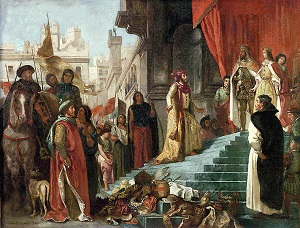
In March of 1492, Ferdinand and Isabella decided to demonstrate their “piety” even further by making Judaism illegal throughout their kingdoms. Jewish people were given three options – baptism, exile or execution. Those who chose exile were not permitted to bring any money, gold or silver with them – all had to be surrendered to the authorities. Around forty thousand chose to leave the country as refugees rather than give up their religion, with some settling in North Africa and others finding sanctuary in the Ottoman Empire. The money they left behind went to further swell Ferdinand and Isabella’s coffers. It was their next decision though that would transform Spain into a global superpower. The explorer Christopher Columbus had been in their court for the last five years trying to get them to pay for an expedition to traverse the Atlantic, and in April of 1492 they finally agreed. The following year he returned, with the first taste of the wealth that would pour into Spain over the following centuries from its South American possessions.
It was Ferdinand and Isabella’s plan to see Spain entirely reunited, and so both arranged their wills such that their crowns would be united on both of their deaths. For most of their reign their heir was their only son John, who was given the title “Prince of Asturias”. He was carefully groomed for the throne, and was married to a daughter of Maximillian I, the Holy Roman Emperor, in order to give him powerful connections in the rest of Europe. Unfortunately though he fell ill from tuberculosis in 1497 and died aged only eighteen. He left behind a pregnant wife, but her child was stillborn. With him gone the succession fell to the couple’s daughters. The eldest Margaret was married to King Manuel of Portugal, something which the ambitious husband of the next eldest (Joanna) seized on to try and press her claim. He was also a child of Maximillian, named Phillip. Ferdinand and Isabella resisted this and declared Margaret their heir, meaning that her children would unite the thrones of Spain and Portugal. Margaret was pregnant at the time, and on the 23rd of August she gave birth to her first and only child, a boy who was named Miguel. It was a difficult birth, and Isabella did not survive it. Miguel was heir to all three Iberian crowns for a month, and then he too fell ill and died.

Isabella weathered these tragedies with aplomb, and renewed the alliance between Portugal and the monarchs by marrying another of her daughters, Maria, to King Manuel. Her youngest daughter, Katherine, was sent off to England to marry Prince Arthur, heir to Henry VII’s throne. [4] Joanna was declared their official heir, though it seemed that she had inherited her grandmother’s mental issues and it was obvious that her husband would be the true ruler. Isabella was less than happy about her kingdom ending up under the control of the Hapsburgs, but before she could make any alternative plans she fell ill in September of 1504 and died in November, aged 53 years old.
With Isabella dead the crown of Castile passed to Joanna, but her husband soon moved to consolidate his power. In 1506 Phillip had himself declared King of Castile, but within a few months he suddenly fell ill and died – possibly of typhoid, possibly poisoned by his father in law. With his death and Joanna’s instability, a council of regents took over power. Phillip and Joanna’s heir was their son Charles, who Ferdinand disliked for being too like his father. Ferdinand remarried to try to sire a new male heir for Aragon but failed, and then planned to leave his crown to Charles’ younger brother Ferdinand. Eventually he was persuaded to relent, and on his death the crowns of Castile and Aragon were united permanently. Though Philip would wind up being mostly remembered for his role as Holy Roman Emperor (he was elected after the death of his grandfather) his son Philip II went on to become the first true King of Spain.
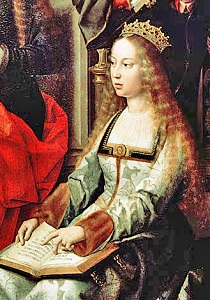
Isabella’s legacy has always been a complicated one. To many she was a symbol of Spanish pride and of national unity, while by others she was remembered as a harsh authoritarian and the face of religious repression. The fascist Franco regime used her as a symbol of Spanish power, and it was under them that she was pushed for sainthood in the Catholic church. But this fizzled out after Franco died, while the backlash to his rule left her somewhat tainted. As many realised, one of the rulers who unleashed the Inquisition on the people of Spain was no saint. But she was, without a doubt, nobody’s pawn either. From an early age she was determined to make her own path, to set her own course and to make her own mark on history. And in that she undoubtedly succeeded.
Images via wikimedia except where stated.
[1] I know this sounds like a modern alt-right tweet, but those were the actual charges they made.
[2] This may have been a forgery, or it may have been genuine. Either way it was enough to be accepted, and it did lead to a later unlikely alliance between the worldly Cardinal (later Pope Alexander VI) and the two pious monarchs.
[3] Both were distantly in line for it.
[4] A marriage which ended with his death, followed by her remarriage to the future King Henry VIII. We all know how that turned out.
